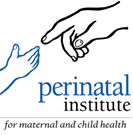


|

|



| C1 Our Trust is worried that introduction of customised charts will put an excessive load on scan resources |
|
GROW charts used by properly trained staff do not increase scan requirements in low risk pregnancies. (see B10) Increased demand on ultrasound resources is usually a result of raised awareness of the need for serial scanning in pregnancies at increased risk, as recommended by the GAP Guidance. The additional demand depends on the current unit policies. Approximately 25-30% of pregnancies have an increased risk of SGA and stillbirth, and case reviews have shown that lack of appropriate surveillance in high risk pregnancies is frequently associated with avoidable deaths. A cost benefit analysis to help maternity units formulate a business case for increased resources is available here. |
| C2 How should fetal growth be assessed in a mother who has had a previous small for gestational age baby? |
| This mother is at increased risk of having another SGA baby; she requires serial ultrasound assessment (3 weekly until delivery) as per the GAP Guidance. |
| C3 Our ultrasound department does not accept referrals for scans at term because they say it is not accurate - what shall I do? |
| Scans for EFW after 37 weeks are at least as accurate as before 37 weeks, with over 70% being within +/- 10%. – see Francis et al, ADC-FNN 2011 |
| C4 How does engagement of the fetal head affect calculation of the EFW? |
| If head circumference cannot be measured accurately because it is too deep in the pelvis, an accurate EFW can also be calculated by a formula which uses abdominal circumference and femur length alone (e.g. Hadlock 2). |
| C5 Should we still be using individual biometry ultrasound charts for assessing fetal growth? |
| Individual parameters should be recorded but plotting them on charts held by mothers can be confusing as we do not have individually customisable charts for HC, AC, FL etc, and population based ‘one size fits all’ charts do not reflect actual growth in a multicultural population. In contrast EFW charts can be adjusted according to individual pregnancy characteristics. |
| C6 If the EFW is below the 10th centile but the population based individual biometry is within normal ranges, what should we do? |
| Customised EFW is more accurate and is better able to distinguish between normal and pathological growth. Individual parameters cannot be customised (see C5, above). |
| C7 I am a community midwife, if I identify a growth problem with a woman I cannot refer directly for scan, but have to refer to a consultant clinic for review. Sometimes the woman will be referred back to me without a scan, sometimes she will be scanned but I feel the delay in getting the scan is unacceptable. What can I do? |
| Discuss this with your manager. If a clinician with the appropriate training makes a referral because of concerns about the fundal height measurement, we recommend that the measurement should not be repeated and the mother be referred directly and expeditiously for an ultrasound scan to assess fetal growth. |
| C8 My Trust can only afford to carry out one scan at 34 weeks for obese women. How should I monitor growth for the rest of the pregnancy? |
| Mothers with a BMI>35 should receive serial (at least 3 weekly) third trimester scans until delivery, as recommended by the RCOG Green Top guidelines. Fundal height measurements are unreliable in mothers with an increased BMI. |
| C9 What is slow growth, and how many crossed centiles does it represent? |
| We avoid using the term ‘crossing centiles’ as this is often misinterpreted as crossing one of the printed lines on the customised growth chart. A drop from 45th to 15th centile can be significant yet crosses none of these lines. See here for examples. |
| C10 Is there any evidence regarding routine third trimester scan to detect SGA or FGR? |
Antenatal detection of late onset fetal growth restriction remains a challenge. There is wide variation in current ultrasound scan regimes which include a last assessment at 34, 35 or 36 weeks’ gestation. We have recently looked at the sensitivity of 34-36 weeks scan in detecting SGA at birth and found it to range between 19% and 36%. We looked at the LAST scan done, regardless of indication, and performance was poor – probably because
The ‘one off’ scan is an inefficient use of resources in light of the chronic ultrasound shortages in the NHS. The focus should be to ensure that we have sufficient resources so that mothers with pre-existing risk of FGR get serial scans, as recommended by the GAP Guidance. Therefore, a routine scan in the third trimester is ineffective due to poor detection rate, and potentially dangerous due to false reassurance. |
| C11 How do customised centiles perform in the identification of macrosomia? |
Macrosomia represents a risk for shoulder dystocia and adverse outcome for baby and mother. Various ways have been used to define macrosomia over the years, including >4kg, >4.5 kg, or > 90th or 95th population based centile. We recommend using >90th customised GROW centile, based on recent studies that have shown that customised centiles improve the identification of macrosomia that is associated with pathological outcome:
|